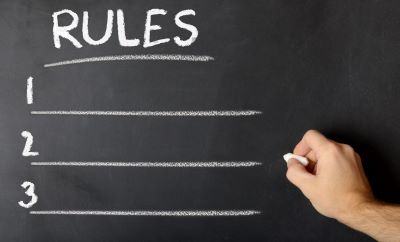My friend Jenna just sent me a list of mistakes that don’t matter, created by Bill Murphy at Inc.com.
I always have fun with these lists! There’s usually a mixture of good and bad advice, and that’s certainly true of this list. (For starters, most of them have nothing to do with grammar, and a number of them aren’t wrong and never were. I’ll explain those points in a future post.)
Let’s talk about items 1 – 5 today:
1. Bill Murphy wants us to forget about “his or her” and use their instead. Bravo, Bill! I’ve taken a vow that I will never use the unspeakably clumsy “his or her” again.
Scared to do it? Listen: nobody will even notice. I just published an academic book, and there’s not a single “his or her” anywhere. I used they every time The copyeditor didn’t change any of them.
2. Who vs. That: Murphy says that you shouldn’t worry about this one. I’m usually careful with it, but I do use who when I write about someone’s pets (or my own). Again, nobody’s going to notice.
3. Less vs. Fewer. Murphy says you shouldn’t worry about it. I agree, and I’m going to push this further than he did. It’s a bogus rule. In 1770 a writer named Robert Baker said that he thought “less” should be reserved for uncountable nouns (like coffee, snow, and smoke). Suddenly a rule was born!
English had been using less for countable nouns (“less potatoes”) for almost a thousand years before Robert Baker made his suggestion. What do you think are the chances of breaking a language habit that’s been around that long? Nil.
Many people overuse fewer – another argument for using less. (People, stop saying “fewer than one!” Gack!)
4. Skipping the -ly in adverbs. Yes – sometimes.
In May, when the Kentucky Derby comes along, I’ll be writing a post about this line from “My Old Kentucky Home”: “The sun shines bright/On my old Kentucky Home.” Stephen Foster didn’t think he had to use brightly, and you don’t have to either.
5. That vs. Which. I think Murphy missed the boat with this one. He quotes a rule that I find weird: “Use that if cutting the clause would change the meaning of a sentence.” I’m a pretty smart person, but that rule sounds like gobbledygook to me.
Here’s a rule that I (ahem!) invented that works great for me: Never let a comma touch the word that. It’s a rule of thumb and doesn’t work 100% of the time. But my goodness – it’s untangled so many punctuation problems for me!
It solves the that vs. which problem in the wink of an eye: I recommend taking the downtown shuttle, that runs every 30 minutes between 7 AM and 7 PM.
Nope! There’s a comma next to that. I’d change it to this: I recommend taking the downtown shuttle, which runs every 30 minutes between 7 AM and 7 PM.
We’ll do 6 – 10 in a future post.


